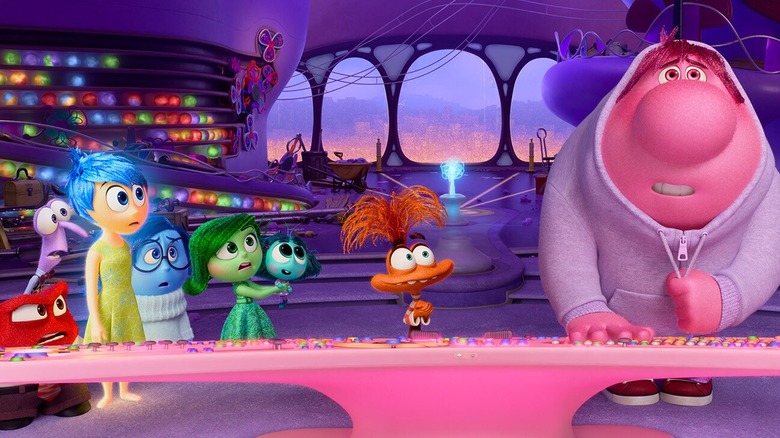In Pixar's Inside Out 2, Life Is Literally A Battle Between Anxiety And Joy
As of this writing, so many people have seen Pixar's Inside Out 2 that it's not only the top-grossing movie of 2024, surpassing Dune: Part II with the $724 million globally that it's racked up so far — the Inside Out sequel also looks like it has a shot at entering the $1 billion club.
I went to see it over the weekend, and the thing that surprised me was how thoughtfully it depicted the emotional cyclones of adolescence — driven by self-doubt, anxiety, panic attacks, and mood swings — in such a way that adult viewers who were at the theater with me were actually moved to tears. That is to say, Inside Out 2 is a movie that follows the best Pixar tradition of offering up bright colors, simple lessons, and whimsical characters aimed at children, while also delivering a profound emotional subtext for older viewers who might have emotional trauma of their own.
In this sequel to the 2015 original, Riley has just graduated middle school and once again finds herself wrestling with a mental health crisis. Whereas in the original movie it was her family's cross-country move that put her through the emotional wringer, this time it's a triple whammy of the onset of puberty (depicted by a literal wrecking ball destroying the control room in Riley's brain), the loss of friendships, and the twin desires of wanting acceptance as well as an opportunity to excel.
Joy, voiced by Amy Poehler, is once again the de facto "leader" of the team of emotions inside Riley, but Inside Out 2 — coinciding with Riley continuing to grow up — also brings a new and more complicated set of emotions: Ennui, Envy, Embarrassment, and Anxiety (the latter of which is voiced by Maya Hawke). This new group quickly takes over, literally bottling up Riley's Joy and the rest of those simpler emotions, and sets about deconstructing Riley's sense of self.
Anxiety positions herself at the center of Riley's mental control panel, determined to protect her from all the downside risks of growing up. What if Riley isn't good enough? What if the new girls don't like her? What if she doesn't make the team? Anxiety starts constructing a new psyche for Riley, one that's rooted in fear, and the message is impossible to miss.
Over-index on all the bad things that might or might not happen, as we see Riley do, and you'll lose friends, you'll get terrible sleep, and you won't perform your best. Anxiety, both the odd-looking orange emotion in Inside Out 2 as well as the version that exists in real life, literally destroys everything, most importantly one's sense of self.
Riley's panic attack while she's at the hockey game — driven by Anxiety in her brain spiraling out of control, before tearfully confessing that she doesn't know what to do next — was one of the most genuinely wrenching sequences I've ever seen in a movie, let alone a Pixar film.
The message of Inside Out 2, once again, is about Joy letting go, that she can't keep loading Riley's bad memories into a chute that sends them to the back of her brain. All of those things, the good and the bad, is required for the composite of a flawed yet fully-formed young woman who's beginning to come into her own. For these and so many other reasons, this is the rare Pixar franchise that I can see continuing to get better over time.
